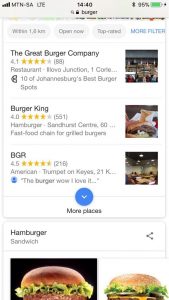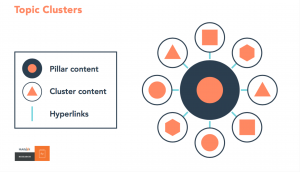So what was the first search engine, do you know?
Our research indicates that Archie may have been the first true search engine.
Archie, which was short for “Archives” was designed to index university articles. A user would search for these via text and Archie would produce the relevant text files.
Old Skool right?
Alan Emtage, who invented Archie, referred to it as “pretty brain-damaged” and perhaps it was back then.
In its most simple form, this was the beginning of SEO
The ranking system was not as we know it today.
This was before SEO algorithms when people still had to put their documents on special servers if they wanted their content to be found online!
So what happened after Archie?
Search engines, of course, continued to evolve at an ever more rapid pace.
In the early days of search engines, the onus was on humans to learn how machines worked which defined our behaviour when it came to search.
It wasn’t too long ago when we were typing fragmented terms into search engines in order to try and find the most relevant search results to solve our problems.
Fast forward to today…
The tables have turned. Computers have such advanced algorithms that they can “learn” how humans work. Today we can search for anything by simply asking our popular search engine “Google” in a conversational tone.
However, the big question for any digital marketer still remains:
Does your SEO strategy reflect this change in search behaviour?
The Evolution of SEO
Search started in the early days of Archie, then went through hundreds of algorithm changes and with each iteration has gotten much better in its understanding of search.
It’s not got to a point where it can produce accurate search results in response to conversational queries whether it’s through a voice search through Siri or a question typed into Google.
Let’s take it one step further...
The increasing role that AI is having in every aspect of our lives puts us at a point where we are beginning to blur the divide between man and machine and we often assume that computers are now smart enough to recognise intent.
As marketers, we need to understand that this "blurring" has changed peoples' search behaviours which means that we also have to change the way that we do SEO.
The metrics that were once the benchmark of world-class SEO are no longer as reliable as they once were.
This is compounded by the debate about whether or not keyword search is still relevant.
A pages’ rank changes depending on the context in which it is searched, simply put, searching for “burgers” yields different results when searched in Johannesburg or Cape Town.

The same search, one made from Johannesburg and the other from Cape Town to see what results of the keyword “Burger” would yield.

This alone makes it nearly impossible to evaluate success based on keyword rankings alone.
Enter the Topic Cluster Model
 SEO has moved to a topic cluster model, which is made up of a single “pillar” page which serves as the main hub for an overarching topic and multiple content pages.
SEO has moved to a topic cluster model, which is made up of a single “pillar” page which serves as the main hub for an overarching topic and multiple content pages.
This is a way of organising a site's content using a cleaner and more deliberate site architecture.
How does this change the way that creators view content?
Content creators must now think in terms of the topics that they want to own, rather than just keywords that they are aiming to rank for.
This will, in turn, allow them to own a “sphere of influence on the internet” to a certain extent.
Pillar content should be thought of as broad and inclusive with regards to a certain topic.
So how many cluster posts do you need?
To create a strong cluster model you should consider 20-30 cluster posts. This sounds like a lot, but this allows you to dive deeper into a range of topics that were only briefly touched on in your pillar page.
Greater results are achieved by weaving your content more tightly.
This can be done by linking all internal content within a topic to a pillar page.
This makes it easier for search engines to scan your content and understand that there is a congruent relationship between the various pages.
This cluster setup also signals to search engines that there is real depth to your content, which in turn gives the pillar page more authority on the topic as a whole.
A Content Marketing Strategy to Kick-Ass With

What is involved in developing a kick-ass content marketing strategy that will have an impact?
Content Marketing Strategy Step 1: Identifying Your Mission, Purpose and Goals
Before getting into buyer personas and marketing channels, determine what your overall vision, mission and goals are.
Then clearly establish metrics to measure so you can track your strategy’s success over time.
Metrics can include customer acquisition, web traffic growth, conversion rates, churn rate and social media engagement to name just a few.
Content Marketing Strategy Step 2: Understand Your Audience
This is where you will create your buyer personas.
You need to have a crystal clear, three-dimensional perspective on who you are creating content for and who you are marketing to.
A lot of marketers are familiar with the B2C buyer persona approach, but for B2B marketing, personas will have different features related to their role in the buyer's journey and their organisational goals and priorities.
Aim to get a full picture of your buyer persona, don’t settle for a shallow view.
In reality, getting buyer personas right takes a fair amount of research and digging.
It’s also important to update your buyer personas as their needs and interests change.
Content Marketing Strategy Step 3: Establish Your Content Priorities
What types of content will be the most relevant for your target audience?
A successful strategy isn’t about using as many content types as you can but rather about determining which are the most relevant to your brand and your customers.
Content types can range from the simplest memes and infographics all the way up to ebooks and cases studies.
It’s worthwhile to put more effort and resources into two or three types of content rather than to balance five or six and end up having no impact at all.
You don’t need to live up to a busy content schedule, just a consistent one.
The idea is to create extremely high-quality content that adds value to your audience on a regular basis.
Once you know what content channels you are going to use, you can create a content schedule.
Content Marketing Strategy Step 4: Plan
Until you get to this stage, you don’t really have a strategy. But you do have everything in place to create a great one.
This is where you brainstorm your ideas;
- What content will you create?
- How often will it be published?
- What channels will you use to publish your content?
Think of strategy as the roadmap that you have decided will best get you to your final destination.
The objective is for everything to come together as a cohesive whole, with all content reflecting the brand’s purpose and the target audience you are marketing to.
Content Marketing Strategy Step 5: Measure It
You already determined the goals of your strategy, as well as your metrics.
Once you start implementing your strategy, make sure you are tracking how well the overall strategy is doing in helping you meet your marketing goals.
If there is a problem somewhere along the way then you know exactly what to focus on as you improve your strategy.
Conclusion
There’s only so much planning, strategising, and brainstorming you can do.
The most important part of crafting a winning strategy and excelling at content marketing lies in the doing.
As you try different approaches, experiment with different tools, and keep track of how your customers are interacting with your brand, you’ll be able to continually improve your content marketing strategy.
Always remember: strategy is an iterative process!
Are you ready to kickstart your company's growth? Download the only Content Marketing Strategy Template you'll ever need to get you started today 👇



